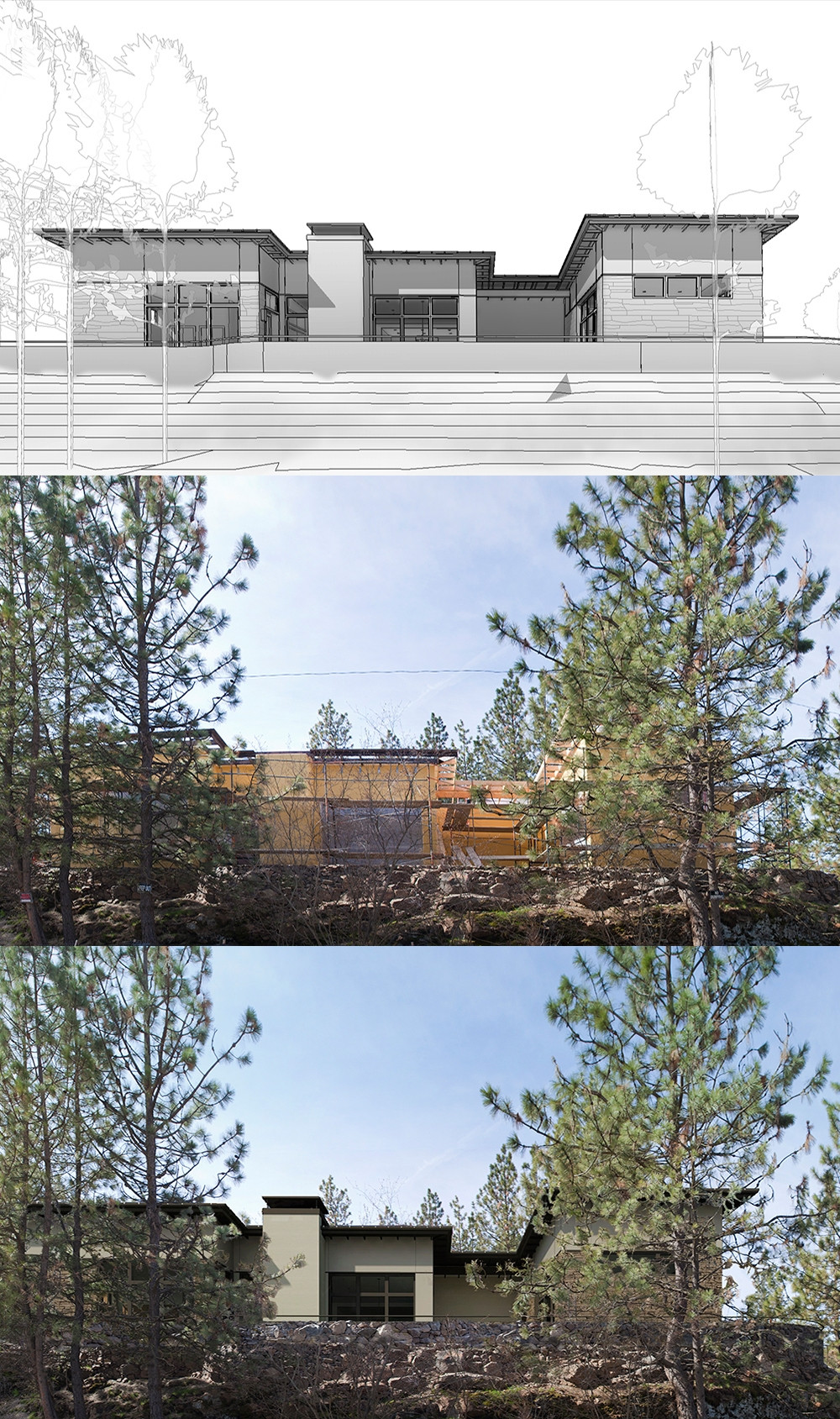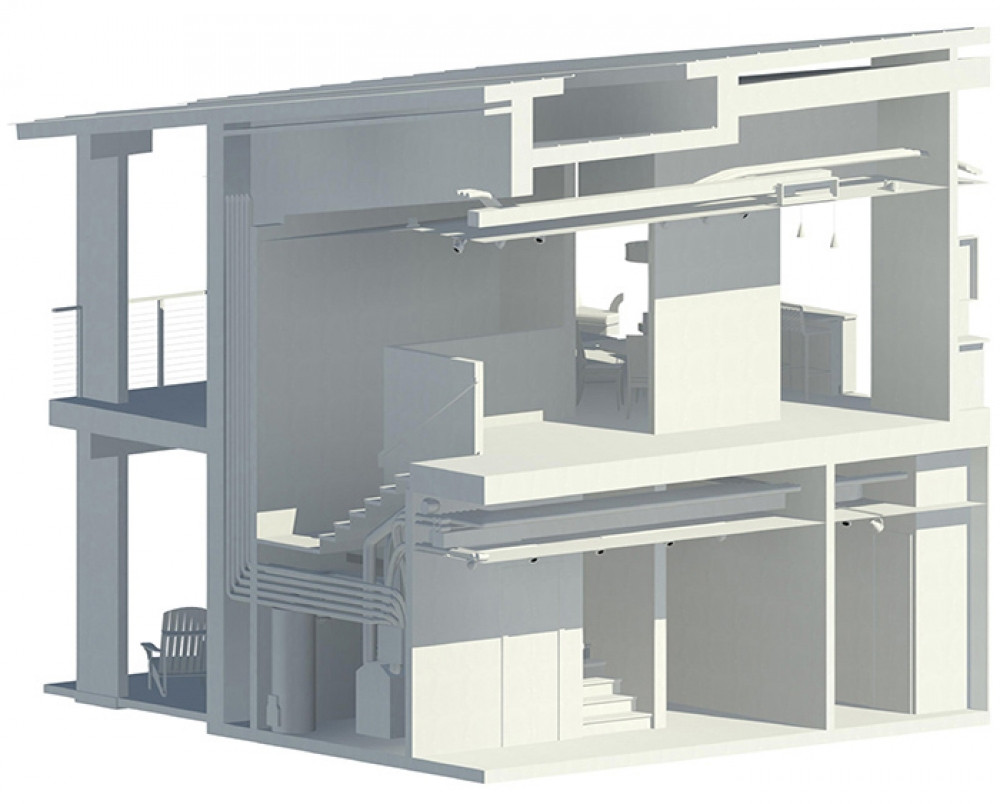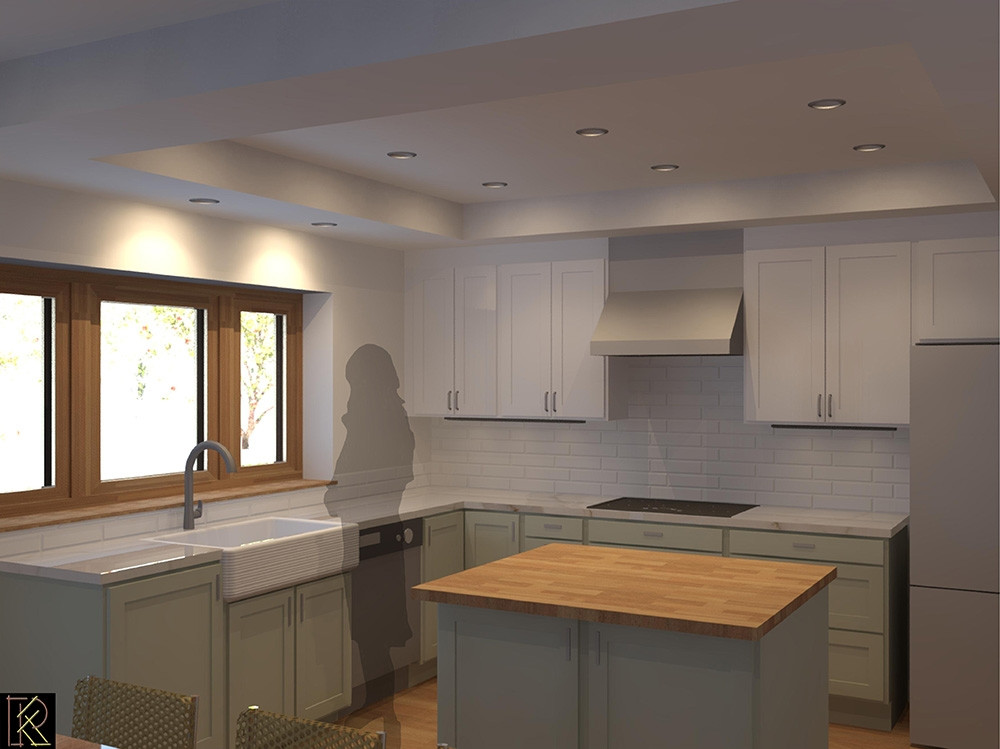
Before our projects are actually constructed on a site, they are built first in our studios, in a comprehensive computer model. Working closely with specialized experts in each of the disciplines involved, we model every system in the project... not just the architecture, but the lighting, plumbing, ventilation, communications, etc. - It's all virtually integrated and assembled in our studio before it's physically built in the world.
The three images to the right illustrate this. At the top is a view of one of our typical models, here showing the view from the street. In the middle is a photograph showing the actual construction in progress. The bottom image is the computer model again, but in a rendered form showing the actual materials that have been selected for the finishes. These three images illustrate how accurate and predictive our models actually are.
Gone are the days when we drew hundreds of cross-referenced drawings with the expectation that everyone, including the design team, would successfully assimilate all that information. Now, we build three dimensional models - usually, one complete model for each project, that matures over time. The technical drawings that we produce are mostly views harvested from that model. If we make a change to anything in the model, all the views of it are instantly updated. There are many benefits to working this way. Sorting things out in the studio is far less costly than sorting them in the field, and always results in a much better outcome. We catch conflicts early, in the design phase, rather than later, when actual construction reveals them too late.

It all begins with a model of the land. At the beginning of the project, we gather survey and satellite data to build an accurate three dimensional model of the land. All our conceptual design work occurs within the context of that site model, so the construction and the site share our attention throughout the process of creating the forms the architecture will take.
Early in the design process, the model will have a relatively simple character. At this point, the building geometry is exported into our three dimensional heat and energy transfer software. As we proceed through design, details emerge in the model. Gradually, every component makes its' appearance in the work, including the lighting and the interior finishes. At that point, we can move around anywhere inside or outside of the spaces, evaluating our work at any time of the day or year.

Being able to visualize interior and exterior spaces before they exist is a fantastic benefit for the entire design team, and especially for clients. We can evaluate lighting, finishes, color choices - any and every aspect of a space can be revealed fully and accurately. Especially for people who have a harder time translating drawings into mental images of spaces in their minds, this is a tremendous relief.
